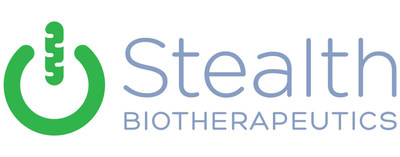Stealth BioTherapeutics Announces Data from the Phase 2 ReCLAIM-2 Study of Elamipretide in Geographic Atrophy at the Clinical Trials at the Summit Meeting 2022
Stealth BioTherapeutics (Nasdaq: MITO) announced updates from the ReCLAIM-2 study of elamipretide for geographic atrophy due to dry age-related macular degeneration. While the primary endpoints were not met, the study indicated significant improvements in low luminance visual acuity (LLVA) and mitochondrial rich ellipsoid zone (EZ) preservation. The data suggest elamipretide could potentially benefit patients with dry AMD. The therapy was well tolerated, showing a lower rate of new-onset exudations compared to placebo. Future clinical development and strategic partnerships are being considered.
- Significant improvement in low luminance visual acuity (LLVA); p=0.04.
- Elamipretide showed promise in preserving mitochondrial ellipsoid zone (EZ) layer; p<0.01.
- Elamipretide was well tolerated, with lower new-onset exudation rates (5.3% vs. 6.9% for placebo).
- Potential for partnerships to advance elamipretide development.
- Primary endpoints of mean change in LLVA and GA progression were not met.
Insights
Analyzing...
New analysis demonstrates correlation between ellipsoid zone dysfunction and vision
BOSTON, May 23, 2022 /PRNewswire/ -- Stealth BioTherapeutics Corp (Nasdaq: MITO), a clinical-stage biotechnology company focused on the discovery, development, and commercialization of novel therapies for diseases involving mitochondrial dysfunction, announced new data from the ReCLAIM-2 study of elamipretide in geographic atrophy (GA) secondary to dry age-related macular degeneration (dry AMD) at the Clinical Trials at the Summit meeting in Lake Tahoe, Nevada.
The ReCLAIM-2 prespecified analyses demonstrate that elamipretide ameliorated progressive decline, or attenuation, of the mitochondrial rich ellipsoid zone (EZ) layer of the photoreceptors (p<0.01) and showed a categorical >2-line improvement in low luminance visual acuity (LLVA) (p=0.04) in patients with GA. Progressive LLVA dysfunction, which is among the first symptoms of dry AMD, compromises patients' ability to see under low-light conditions such as at dusk, in the evening, or indoors using artificial light. Additional analyses show that, consistent with prior findings from the ReCLAIM Phase 1 study, changes in LLVA correlated with baseline EZ attenuation in ReCLAIM-2. The new analyses also show that elamipretide-mediated reduction of progressive EZ attenuation correlated with improvements in LLVA. Although the trial's primary endpoints of mean change in LLVA and GA progression were not met, these analyses were found to be promising and to support and inform the continued development of elamipretide for dry AMD.
Dry AMD is a progressive retinal disease in which the photoreceptors, which are specialized neurons found in the retina that convert light into electrical signals required for normal visual function, suffer progressive damage and death, leading to progressive loss of vision. One of the earliest signs of photoreceptor dysfunction is progressive damage to, or attenuation of, the ellipsoid zone (EZ), which is a mitochondrial rich layer of the photoreceptors. EZ attenuation has been shown to precede and predict visual dysfunction in dry AMD and other retinal diseases.
"Preserving the health of structures in the eye needed for visual function, such as photoreceptors, is critical for patients with dry AMD," said Jeffrey Heier, M.D., the principal investigator of the ReCLAIM-2 study and director, retina service, and director, retinal research, Ophthalmic Consultants of Boston. "I am pleased to present these data underscoring for the first time the important relationship between mitochondrial health and vision in GA, which we hope will inform future efforts to improve outcomes for patients living with this progressive and irreversible disease."
Elamipretide was generally well tolerated in ReCLAIM-2. The rate of new-onset exudations was
"We are excited to confirm that targeting mitochondrial dysfunction in dry AMD may preserve and potentially improve visual function for some affected patients," said Reenie McCarthy, CEO of Stealth BioTherapeutics. "We believe these data can help enrich and inform future development efforts for this devastating disease, and we are evaluating strategies to progress this program, including through potential partnering discussions."
The company is also progressing the clinical development of elamipretide in several rare disease indications as well as advancing a broad pipeline of novel mitochondria-targeting compounds.
About Dry AMD
Dry AMD is a leading cause of blindness impacting more than 5 million people worldwide which can severely impair visual function, independence, and quality of life.
About Stealth
We are a clinical-stage biotechnology company focused on the discovery, development, and commercialization of novel therapies for diseases involving mitochondrial dysfunction. Mitochondria, found in nearly every cell in the body, are the body's main source of energy production and are critical for normal organ function. Dysfunctional mitochondria characterize a number of rare genetic diseases and are involved in many common age-related diseases, typically involving organ systems with high energy demands such as the eye, the neuromuscular system, the heart and the brain. We believe our lead product candidate, elamipretide, has the potential to treat ophthalmic diseases entailing mitochondrial dysfunction, such as dry AMD, rare neuromuscular disorders, such as primary mitochondrial myopathy and Duchenne muscular dystrophy, and rare cardiomyopathies, such as Barth syndrome. We are evaluating our second-generation clinical-stage candidate, SBT-272, for rare neurological disease indications, such as amyotrophic lateral sclerosis and frontotemporal dementia, following promising preclinical data. We have optimized our discovery platform to identify novel mitochondria-targeted compounds which may be nominated as therapeutic product candidates or utilized as mitochondria-targeted vectors to deliver other compounds to mitochondria.
Forward-looking Statements
This press release contains forward-looking statements within the meaning of The Private Securities Litigation Reform Act of 1995. Such forward-looking statements include those regarding Stealth BioTherapeutics' expectations for its clinical development of elamipretide for GA associated with dry AMD and other indications, the potential benefits of elamipretide and potential regulatory interactions. Statements that are not historical facts, including statements about Stealth BioTherapeutics' beliefs, plans and expectations, are forward-looking statements. The words "anticipate," "expect," "hope," "plan," "potential," "possible," "will," "believe," "estimate," "intend," "may," "predict," "project," "would" and similar expressions are intended to identify forward-looking statements, although not all forward-looking statements contain these identifying words. Stealth BioTherapeutics may not actually achieve the plans, intentions or expectations disclosed in these forward-looking statements, and you should not place undue reliance on these forward-looking statements. Actual results or events could differ materially from the plans, intentions and expectations disclosed in the forward-looking statements as a result of known and unknown risks, uncertainties and other important factors, including: Stealth BioTherapeutics' ability to obtain additional funding and to continue as a going concern; the impact of the COVID-19 pandemic; the ability to successfully demonstrate the efficacy and safety of Stealth BioTherapeutics' product candidates and future product candidates; the preclinical and clinical results for Stealth BioTherapeutics' product candidates, which may not support further development and marketing approval; the potential advantages of Stealth BioTherapeutics' product candidates; the content and timing of decisions made by the FDA, the EMA or other regulatory authorities, investigational review boards at clinical trial sites and publication review bodies, which may affect the initiation, timing and progress of preclinical studies and clinical trials of Stealth BioTherapeutics product candidates; Stealth BioTherapeutics' ability to obtain and maintain requisite regulatory approvals and to enroll patients in its planned clinical trials; unplanned cash requirements and expenditures; competitive factors; Stealth BioTherapeutics' ability to obtain, maintain and enforce patent and other intellectual property protection for any product candidates it is developing; and general economic and market conditions. These and other risks are described in greater detail under the caption "Risk Factors" included in the Stealth BioTherapeutics' most recent Annual Report on Form 20-F filed with the Securities and Exchange Commission ("SEC"), as well as in any future filings with the SEC. Forward-looking statements represent management's current expectations and are inherently uncertain. Except as required by law, Stealth BioTherapeutics does not undertake any obligation to update forward-looking statements made by us to reflect subsequent events or circumstances.
Investor Relations
Kendall Investor Relations
Adam Bero
abero@kendallir.com
IR@StealthBT.com
![]() View original content to download multimedia:https://www.prnewswire.com/news-releases/stealth-biotherapeutics-announces-data-from-the-phase-2-reclaim-2-study-of-elamipretide-in-geographic-atrophy-at-the-clinical-trials-at-the-summit-meeting-2022-301552607.html
View original content to download multimedia:https://www.prnewswire.com/news-releases/stealth-biotherapeutics-announces-data-from-the-phase-2-reclaim-2-study-of-elamipretide-in-geographic-atrophy-at-the-clinical-trials-at-the-summit-meeting-2022-301552607.html
SOURCE Stealth BioTherapeutics Inc.







